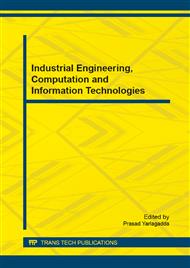p.939
p.943
p.947
p.952
p.957
p.961
p.965
p.969
p.974
Coding Algorithms and Network Plan for Context-Aware Data Collection Based on Internet of Things in Large Marine Ships
Abstract:
The equipment maintenance in large marine ships may rely on Internet of Things to provide monitoring of equipment status instantly. The data volume of sensing data is huge as the number of equipments is large. It is critical to decrease the communication overhead of uploading sensing data for efficiently and timely monitoring. In this paper, we propose several coding algorithms by using data context that is modeled by our normal forms on the base of our observations. The communication efficiency is improved, which is justified by formal analysis and rigorous proof. We also propose several network plan policies for further improvement of the communication efficiency by using data context and cluster head deployment.
Info:
Periodical:
Pages:
957-960
Citation:
Online since:
December 2014
Authors:
Price:
Сopyright:
© 2015 Trans Tech Publications Ltd. All Rights Reserved
Share:
Citation:


